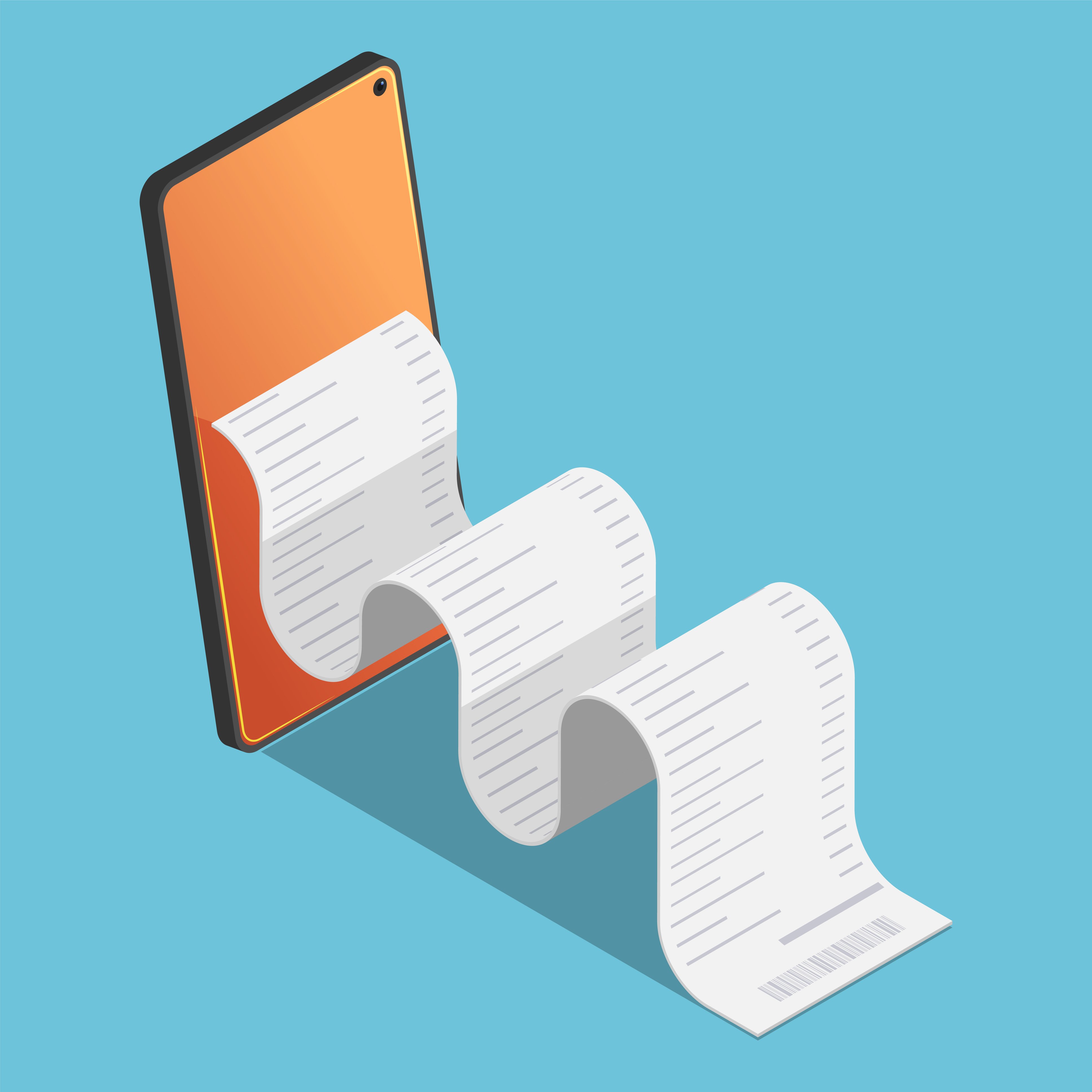As a business owner, you know how critical it is to get paid on time. However, sometimes, things don’t go as planned, and unpaid invoices become a real problem. Unpaid invoices, especially open invoices, can lead to significant cash flow issues that can hinder your business's operations.
In this blog, we will dive into the concept of an open invoice, explaining what it is and how it impacts your business. We’ll also break down the different types of open invoices, how they work, and provide an example to highlight the challenges that come with managing them.
Beyond just understanding open invoices, we’ll offer strategies to reduce the risk of delayed payments, such as leveraging automated invoicing systems and offering payment incentives. We’ll also discuss the role of invoice factoring as a potential solution for businesses looking to improve cash flow while waiting for invoice payments to come through. Keep reading to learn how to stay on top of your invoicing process and keep your cash flow healthy.
What is an open invoice?
An open invoice is a record of goods or services provided by a company that have not been paid yet.
Open invoices can cause cash flow issues if there are many outstanding bills. To manage them, companies need clear payment policies and regular follow-ups with customers to avoid too many past-due payments and ultimately bad debt. Creating a proper workflow to follow up with these past due payments is essential to the health of your business.
Understanding open invoices
To maintain healthy cash flow and financial stability in your business, it's important to understand how to manage unpaid balances on goods or services provided by following up with clients and offering payment plans within a reasonable timeframe. This timeframe varies, but a typical timeline is 30, 60 or 90 days.
In some cases, it can be useful to utilize a collection agency or partner with a B2B payments and credit management platform like Resolve. Clear communication and detailed documentation can prevent misunderstandings regarding payment terms or late fees.
Learn more: B2B Payment Reminders, How to Get Paid on Time
How does an open invoice work?
An open invoice is a payment method where the full amount is not received upfront. Instead, the customer pays at a later date as per the agreed-upon terms. Many businesses offer 30/60/90 day net terms.
This can benefit both parties by providing payment flexibility and building trust. However, it's crucial to monitor open invoices and follow up on overdue payments to maintain healthy business relationships.
Common types of open invoices
Invoicing practices include a range of different types of open invoices such as partial payments, overdue, unpaid, disputed, and recurring. In most cases, partial payments occur when the customer has made some payment but not the total amount due.
Overdue invoices are bills that go past their due date without being paid while unpaid bills have no money towards them at all. Disputed transactions involve customer complaints about incorrect billing or defective goods while recurring reoccur at set times.
1. Manual, offline pending payments
When it comes to Manual, Offline Pending Payments, businesses can generate and send invoices through email or mail. For offline pending payments like checks or wire transfers to be processed timely, companies must keep track of their outstanding invoice payments and follow up with their customers. Using online invoicing software like QuickBooks or Resolve can automate the payment process while also providing templates for invoices and sending email reminders for unpaid or incomplete payments. Using software can also speed up the invoice matching or reconciliation process saving your AR team time and headaches.
2. Online pending payments
For businesses that operate online, dealing with online pending payments is a necessary part of invoicing. E-commerce businesses face this issue regularly and must track the status of their open invoices through the company's online platform or payment gateway.
To ensure timely payments and avoid late fees or discrepancies in accounting books, it is essential to have a system in place for following up on these open invoices. Utilizing automation tools such as reminders and early payment discounts can help streamline the invoicing process and improve cash flow.
Read on: The Top B2B eCommerce Platforms for Manufacturers, Wholesalers, and Resellers
3. Bills
Bills are an essential part of the open invoice work as they indicate the amount due and its due date. Invoicing software can help streamline the invoicing process while also making it easy to track outstanding invoices from customers. Using automation to follow up with customers regarding late payment or incomplete payments is also critical in maintaining a healthy cash flow. By offering online payment methods or automatic billing options with early payment discounts or grace periods for different types of open invoices can encourage timely payments.
4. Incomplete payments
Invoicing often faces the problem of incomplete payments. Such a scenario arises when a customer pays only a portion of what is owed. To ensure that businesses receive timely and complete payments in the future, it's important to keep proper records and communicate with the customer promptly. Offering payment plans or settling disputes can also be considered as potential solutions to avoid such scenarios.
A mini-example of an open invoice
Late payments can have a negative impact on your company's cash flow and may require legal action to collect the outstanding balance. To avoid such issues, it's crucial to outline clear payment terms in your contracts with clients. If a customer fails to pay for services rendered on time, for example, it results in an open invoice. Such invoices can be problematic and lead to discrepancies in accounting books. Therefore, it's best to address them quickly and professionally.
The 12 most common invoice payment terms
- Cash account: This term refers to invoices that clients must pay in cash. In this case, credit is not applicable.
- Cash before shipment (CBS): This term is common among businesses that make custom work for clients, such as designers, artists, and furniture makers. They typically require a down payment before shipping the goods to protect them from loss should the client fail to clear the rest of the invoice.
- Cash in advance (CIA): This term is similar to CBS. However, this one indicates a requirement for full payment before work begins. Also known as Payment in Advance (PIA).
- Cash next delivery (CND): This term is for businesses with repeat clients. This means that you must pay an order in full before the next scheduled delivery. Other invoice terms that mean the same are recurring invoicing or recurring invoices.
- Cash on delivery (COD): This indicates that cash, or an equivalent, is due when the client receives the invoice.
- Cash with order (CWO): This is similar to CBS. However, this requires upfront payment before order fulfilment and goods creation.
- Contra payment: This happens when a business issuing an invoice also owes money to the company receiving the invoice. There is an allowance for payments in services or products instead of cash.
- End of month (EOM): This indicates that payment is due on the last day of the month of the invoice date.
- Interest invoice: This is a special invoice issued for late fees and interests accrued on previous unpaid invoices.
- Terms of sale: This is the details of the order invoice. These can include a due date, total amount of the order, quantity and quality of goods, invoice number, delivery date, and acceptable payment methods.
- Net 7/10/30/60/90: This implies that a payment is due in 7, 10, 30, 60, or 90 days past the invoice date. To ensure you always have sufficient cash flow, keep the number of days for credit payments short, preferably net 7, 10, or 30.
- 2/10 net 30: This means that a client needs to pay 30 days after the invoice date. However, if they manage to pay within 10 days, then get a 2 percent discount on the invoice. These early payment discounts work as incentives to encourage clients to pay invoiced amounts early.
The challenge of open invoices
Managing outstanding invoices is an ongoing challenge when running a small business. This requires establishing clear payment terms and deadlines with clients to avoid cash flow problems.
Offering incentives for early payments or penalties for late payment can encourage timely collection of outstanding invoices. Implementing automation such as reminders and follow-up processes helps ensure timely payments while reducing the need for legal action to collect unpaid invoices.
1. Too many open invoices
To avoid cash flow issues, it's crucial to keep track of all outstanding invoices and follow up with clients regularly to ensure timely payments. A clear payment policy can prevent the accumulation of too many open invoices. Offering incentives for prompt payment or charging late fees may encourage clients to pay on time. A well-organized invoicing process with specific payment terms and templates can further streamline the payment process.
Learn more: How Automated Invoice Reconciliation Can Help Your Business
2. High processing time
To efficiently manage open invoices and prevent cash flow problems due to high processing time, it’s important to follow up on late payments and reconcile accounts receivable while addressing manual errors in invoices. Consider using accounting software or outsourcing invoicing needs to do this.
You can automate and simplify your invoicing process by utilizing online payment options with templates for email notifications with details of invoice numbers and payment methods. Encourage timely payment through incentives like early payment discounts while charging late fees for overdue payments with clear payment terms and deadlines.
Another option is seeking cash advances on your invoices to allow for higher processing times and late payments. By doing this, you are also strengthening the relationship with your customers and giving them more time to pay but your cash flow is not impacted. Learn more about the benefits of short-term business financing.
3. Manual errors in invoices
Errors in invoices can be a real headache for businesses that rely on open invoices. They might arise due to incorrect billing information, calculation mistakes or other discrepancies. But there's a way around this problem: you can set up a standardized invoicing process and use automated invoicing software to eliminate manual errors. This allows you to streamline the payment process and keep track of everything with ease.
4. Late invoice payments
To ensure good cash flow and financial health, it’s crucial for businesses to establish clear payment terms and follow up promptly on overdue invoices. Encouraging timely payments by offering early payment discounts or imposing late fees is an effective way to manage outstanding invoices.
Regularly reviewing accounts receivable aging reports can give businesses a better understanding of their cash flow. In addition to these best practices, it's essential to have standardized invoicing processes in place to minimize manual errors and discrepancies.
Automate your invoice reconciliation process
An open invoice is any unpaid invoice that is yet to be settled. Open invoices can be challenging for businesses as they affect cash flow and may lead to financial instability. Proper management of open invoices involves understanding the different types of open invoices, implementing efficient billing systems, and monitoring payment timelines.
At times, outsourcing your accounts receivable management can help you concentrate on your core business while ensuring timely payments from clients.
If you are struggling with managing open invoices or want to learn more about handling them effectively, contact us for a free consultation today.







